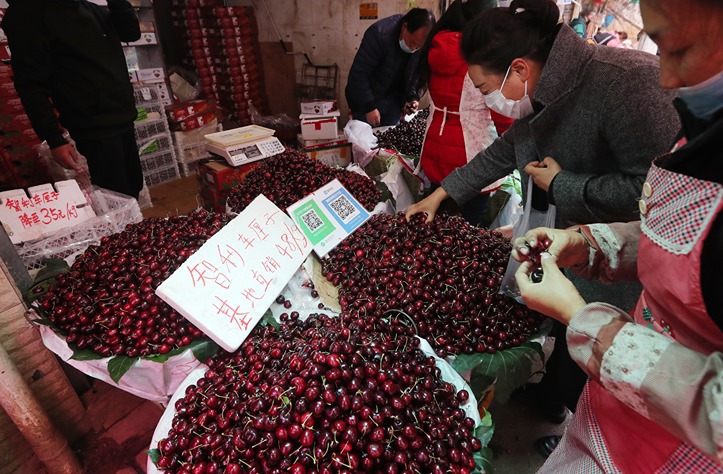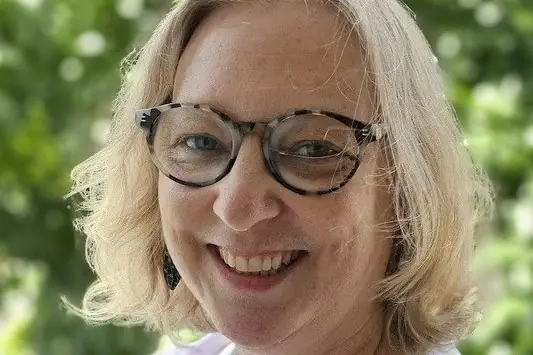According to a new report from the United States Department of Agriculture (USDA), cherry production in China will reach 850,000 tons in the 2024-2025 season (April-March), an increase of 6% over the previous year.
Currently, drought continues in some areas of northern China, including the main cherry-producing province, Shandong. However, the cherry season in most of the northern production areas, including Shandong, Henan, and Hebei, ended when the drought situation began to worsen in early June.
As a result, according to growers in Yantai (Shandong), the largest cherry-producing region in China, adverse weather will only affect late-maturing cherries. According to cherry growers in Yantai, the drought has also caused a reduction in the size of the fruit. In other major production areas, cherry production and quality are expected to improve under normal growing conditions.
The USDA predicts that the country's cherry production will continue to grow in the coming years thanks to the expansion of acreage and increased yields. Cherry acreage has stabilized in traditionally cherry-producing provinces, such as Liaoning and Shandong, after the central government introduced policies to regulate the use of agricultural land.
For example, arable land cannot be used for non-agricultural purposes, and basic agricultural land cannot be used for crops other than grains.
More Cherries
Good market returns have encouraged farmers to plant more cherries in mountainous areas and in western provinces (such as Shaanxi, Shanxi, and Gansu) and southwestern provinces (Sichuan, Guizhou, and Yunnan). Industry reports have revealed that greenhouse cherry production has developed rapidly in high-altitude and colder areas, such as Inner Mongolia, Xinjiang, Heilongjiang, and Tibet.
Increasing numbers of private companies and individuals have invested in greenhouse cherry production with the goal of improving fruit quality and advancing the harvest. As a result, the share of greenhouse cherry production has reached nearly 50% in Dalian (Liaoning), the second-largest cherry-producing region. Most of the country's cherry production is still carried out in open fields.
Local governments in more developed regions support farmers in constructing rain shelters, which help prevent fruit cracking and thus protect them from frost. According to local farmers in Shandong, the government of Yantai currently provides a subsidy of $10,417 per hectare to farmers for building rain shelters on cherry crops.
According to industry sources, cherry growers, especially those in traditionally cherry-producing provinces like Liaoning and Shandong, are actively replacing older varieties, such as Red Lantern, with market-preferred varieties like Russian.
Other popular varieties are Beauty Early, Qizao, Jiahong, Rainier, Black Pearl, and Brooks. Chinese farmers prefer medium-early maturing varieties; late-maturing varieties, such as Lapins, Regina, and Kordia, occupy a relatively small market share.
Cherry quality has generally improved in recent years. A small portion of domestically produced cherries, especially those grown under glass, are able to compete with imported cherries in terms of taste, color, size, and freshness. However, the quality of domestic cherries is not homogeneous because most are produced by small farmers working on scattered plots of land between 0.1 and 1.0 hectares.
Many cherry growers apply hormones for plant growth to increase the size of the fruit, which may result in deformities. It is common to harvest the fruit before it is fully ripe to extend its shelf life, but traders report that this practice reduces the fruit's flavor (brix level).
 Image 1.
Image 1.
Prices
Cherry prices have fallen significantly in the current season compared to a year ago, primarily due to weak demand and increased supply. For example, Beauty Early cherries of grade II (10-12 grams) sold for 30 RMB ($4.2) per kilogram, a 25% drop from a year ago, according to sellers at a major wholesale cherry market near Yantai.
The smaller fruit size caused by drought has also put pressure on cherry prices. However, industry sources have indicated that prices for high-quality cherries (large, firm, dark-colored, and sweet) remain strong. For example, high-quality greenhouse-grown cherries fetched $40 per kilogram on farms between March and May, according to fruit traders in Dalian.
Increasing Imports
The USDA has found that Chinese cherry imports will continue to grow in the near future, primarily due to the expected increase in supply from Chile, the main supplier, whose cherry production will double in the coming years thanks to the expansion of cultivated acreage, according to industry sources.
The marketing efforts of the Chilean government and industry will help integrate cherry sales into more second- and third-tier Chinese cities. Chilean cherry exports also benefit from chartered ships at specially designated ports that help facilitate the movement of cherries. Nearly 90% of cherry imports enter China between December and February, during the local off-season and the peak consumption period around the Lunar New Year.
Chinese imports of cherries from the United States, the largest supplier in the northern hemisphere, are expected to continue to increase in the 2024-2025 season, as industry sources have commented that the expected increase in production with appropriately sized and brix level fruits will attract Chinese buyers.
Source: Simfruit.cl
Image: Washington Post
Cherry Times - All rights reserved













